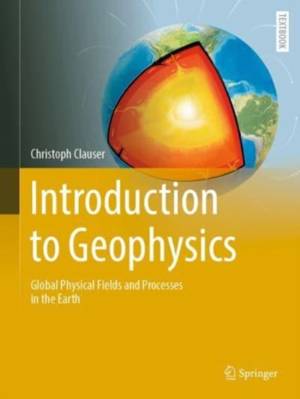
- Afhalen na 1 uur in een winkel met voorraad
- Gratis thuislevering in België vanaf € 30
- Ruim aanbod met 7 miljoen producten
- Afhalen na 1 uur in een winkel met voorraad
- Gratis thuislevering in België vanaf € 30
- Ruim aanbod met 7 miljoen producten
Omschrijving
This textbook on geophysics is a translated and revised editon from its third German edition Einführung in die Geophysik - Globale physikalische Felder und Prozesse in der Erde. Explaining the technical terminology, it introduces students and the interested scientific public to the physics of the Earth at an intermediate level. In doing so, it goes far beyond a purely phenomenological description, but systematically explains the physical principles of the processes and fields which affect the entire Earth: Its position in space; its internal structure; its age and that of its rocks; earthquakes and how they are used in exploring Earth's structure; its shape, tides, and isostatic equilibrium; Earth's magnetic field, the geodynamo that generates it, and the interaction between the Earth's magnetosphere and the solar wind's plasma flow; the Earth's temperature field and heat transport processes in the core, mantle, and crust of the Earth and their role indriving the geodynamo and plate tectonics.
All chapters begin with a brief historical outline describing the development of each branch of geophysics up to the recent past. Selected biographies illustrate the personal and social conditions under which groundbreaking results were achieved. Detailed mathematical derivations facilitate understanding. Exercises with worked-out results allow readers to test the gained understanding.
A detailed appendix contains a wealth of useful additional information such as a geological time table, general reference data, conversion factors, the latest values of the natural constants, vector and tensor calculus, and two chapters on the basic equations of hydrodynamics and hydrothermics.
The book addresses bachelor and master students of geophysics and general earth science, as well as students of physics, engineering, and environmental sciences with geophysics as a minor subject.Specificaties
Betrokkenen
- Auteur(s):
- Uitgeverij:
Inhoud
- Aantal bladzijden:
- 397
- Taal:
- Engels
- Reeks:
Eigenschappen
- Productcode (EAN):
- 9783031178665
- Verschijningsdatum:
- 18/04/2024
- Uitvoering:
- Hardcover
- Formaat:
- Genaaid
- Afmetingen:
- 218 mm x 297 mm
- Gewicht:
- 1338 g

Alleen bij Standaard Boekhandel
Beoordelingen
We publiceren alleen reviews die voldoen aan de voorwaarden voor reviews. Bekijk onze voorwaarden voor reviews.











